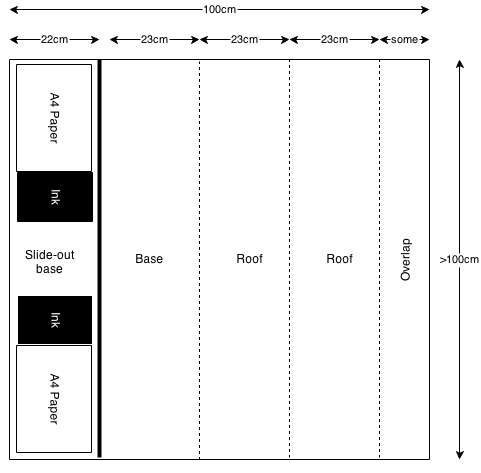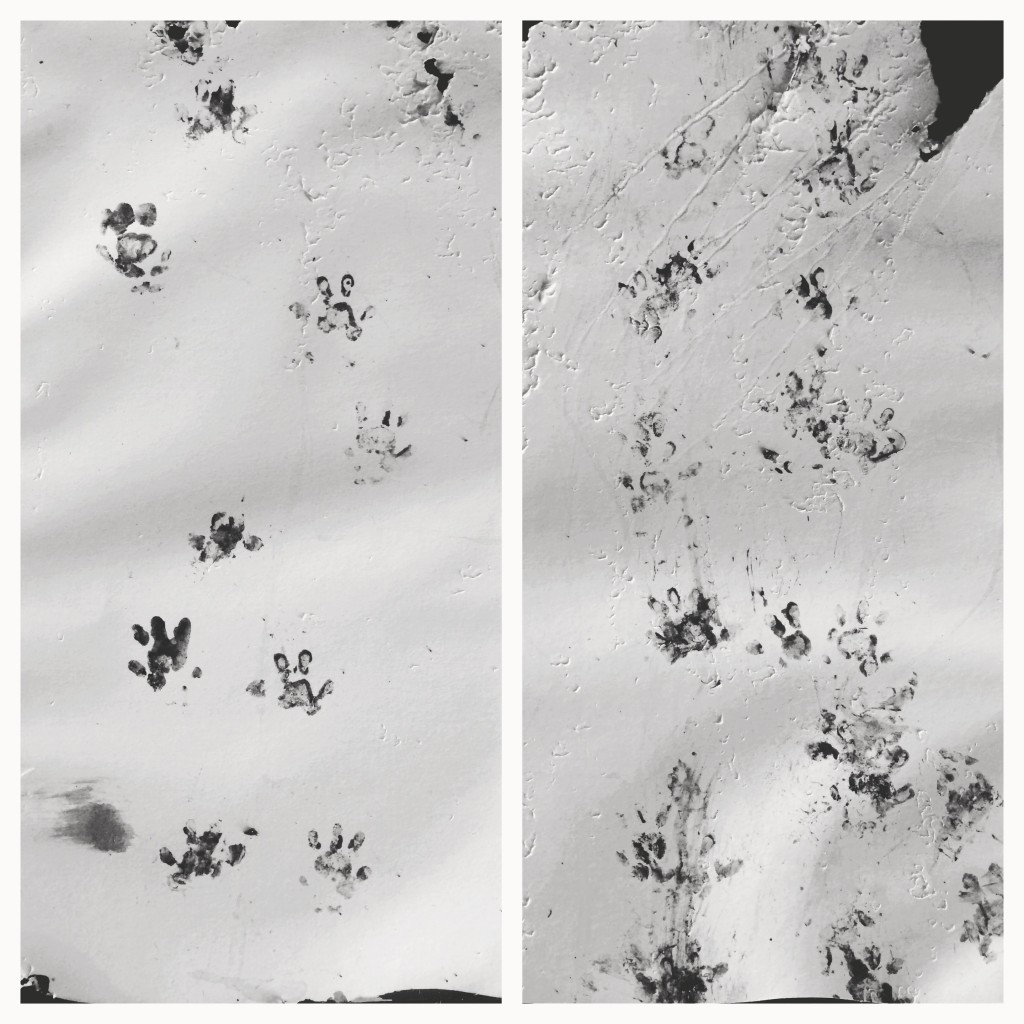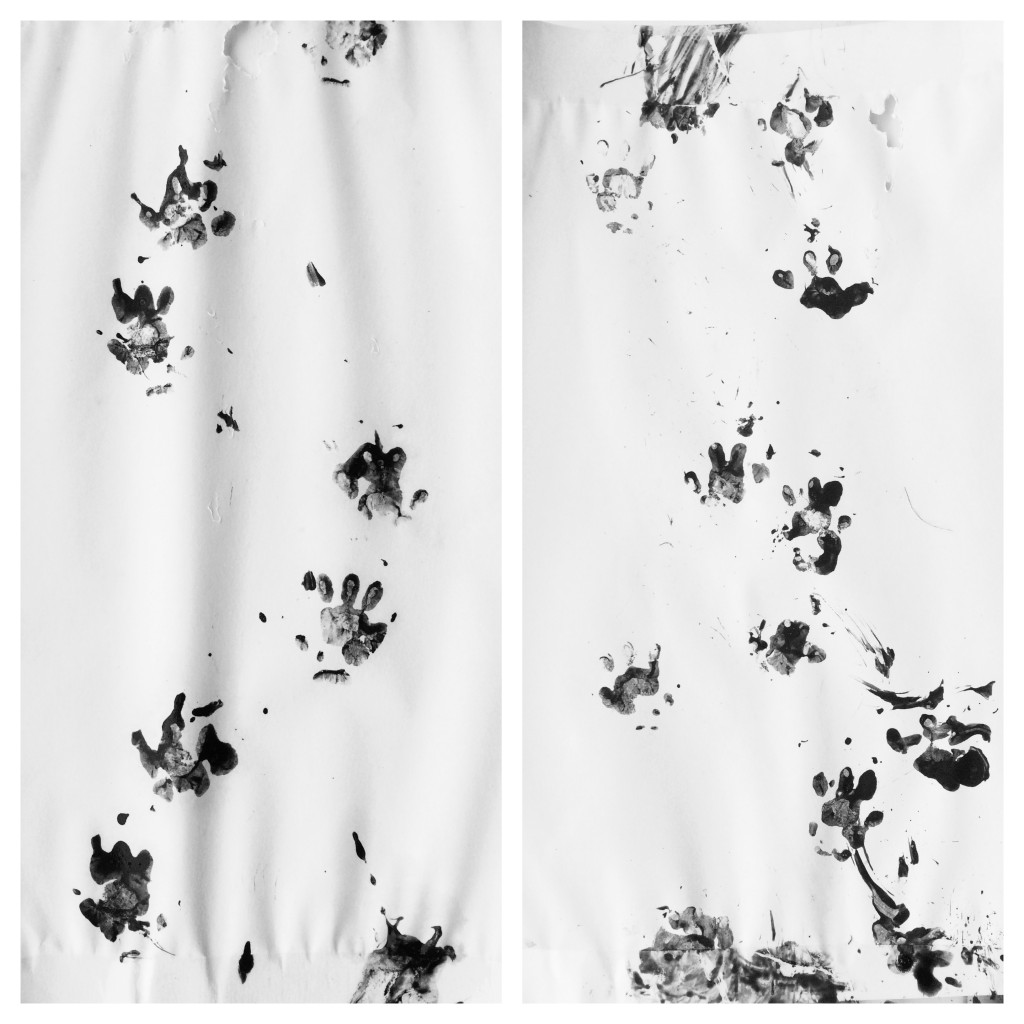Discovering Hedgie - Building a Hedgehog Footprint Tunnel

Last Friday I was out taking a photo of the sunset when I heard some shuffling around in the nettles separating our garden from the field. Sure enough, snuffling around in the undergrowth was the brown shape of a hedgehog. I couldn’t get a clear photo and he’d disappeared once I’d called my wife. But this was exciting! We live out in the country and I have to believe that there are plenty of hedgehogs around but we’d never had any evidence. I’ve seen foxes, rabbits, and stoats in the fields and roads around here, and even what I suspect was a badger sett down the road. But, until now, not a single hedgehog.
How could we attract the hedgehog back? How could we promote our garden as a place for hedgehogs? How could I get the kids involved? Sidenote: we were already the “Hedgehog family” as the kids refer to me as “Hedgehog #1” (because of my on-again/off-again “spiky” beard). The 6yo ordained herself “Hedgehog #2” even though she doesn’t have a beard.
I’ve rigged up a motion-sensitive camera trap with a Raspberry Pi (more on that in another post) but I wasn’t convinced that it was working reliably so I needed to go low-tech. I’d watched BBC Springwatch with the kids and we’d seen them put down a ‘footprint tunnel’ to confirm the presence of hedgehogs. A little googling, a quick doodle, a trip to the DIY shop and…
Tunnel Construction
The aim is to build a triangular tunnel about a metre long that a hedgehog can walk through. It should be slightly wider than an A4 piece of paper at the base

Materials
- 1x Polycarbonate plastic sheet. I got these from B&Q. At least 100cm x 100xm, or buy two and tape them together
- Black duck tape
- J-Cloths
- Split pins
- Black poster paint
- Black food colouring
- Washing-up liquid
- 2x white card
The polycarbonate sheets are typically used for outdoor buildings like sheds, car ports, or grow houses. Ideally you’d only need one sheet but I couldn’t get one wide enough.
Instructions
- Cut a strip the width of an A4 piece of paper from the sheet (denoted by the think line). This is the base panel which will hold the paper, ink and food.
- Now, with the remaining sheet, we’re going make the actual tunnel. You’ll need a piece that’s 3x the width of an A4 sheet, plus a bit for overlap. You might need to make it from two separate sheets if your sheet isn’t wide enough. My sheet was 120cmx60 so I had to buy two.
- Score along the dotted lines so you can fold the sheet into a triangle. Each side should be slightly larger than A4 to allow for the base panel to slide inside it. By cutting through only one side of the sheet, and using the overlap, we have something that’ll keep the rain out.
- Tape together the sheet using the duck tape, making sure that the base panel slides easily in and out.
- Cover the entire tunnel in black duck tape. I’m not sure if this is necessary but I decided the hedgehog might prefer it if the tunnel was dark, and it would stop the sun getting drying out the ink.
- Double over the J-Clothes to make the ink pads. They should fit entirely on the base panel (not going over the edge or it’ll be hard to slide the base panel in/out) and be at least 10cm wide. Make holes in the base panel and use the split pins to secure the pads.
- I’ve played around with various ways to make the ink and this is what I suggest: black poster paint, a little washing up liquid, some black food colouring and some water. Mix it up and pour it over the pads. Keep refreshing the pads until they’re completely full of the inky solution.

(Re-)Setting the ‘trap’

- Tape the A4 sheets of paper or card to either end of the base panel. I’ve found card better in case there’s rain or dampness overnight.
- Refresh the ink pads. If they haven’t dried out, they just water poured over them until they’re full again
- Place the food in the centre
Feeding
I’ve tried 2 different types of wet cat food and an apple over the course of a week with no luck. I’d previously used Nutella on rat traps so I smeared a bit on the panel and stuck loads of raw peanuts (bird food) to it. The next morning it was all gone and we had ourselves some lovely hedgehog prints. Now, I don’t really want to recommend Nutella as a frequent food (it was just an experiment) but peanuts are good and I’m trying out some small, dry kitten biscuits tonight. There’s lots of advice about feeding hedgehogs from reputable sources so try some of those suggestions too. Apparently they love freeze-dried mealworms if you can get them.
Apparently Hedgehogs drink a lot of water, and it can be hard to come by, so leave a good sized saucer out for him (I used a deep flowerpot saucer).
Do not feed hedgehogs bread or milk. Milk is especially bad for hedgehogs.

Identification
How do you know if the track were from a hedgehog? Look for three round toes out the front, and one either side further back. This page or this printable sheet are pretty good guides. There’s really nothing else of the same shape and size.


